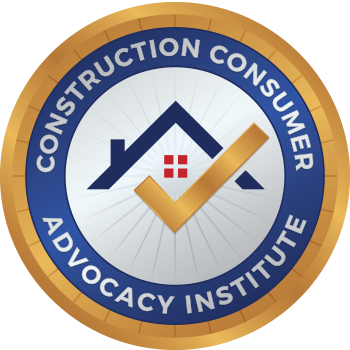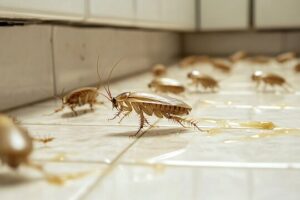A roof leak might not seem like an urgent issue at first. A small drip here or a wet patch there—even if it’s a minor inconvenience—doesn’t sound like a major problem. However, ignoring a roof leak could pose serious risks to your health and your home’s overall safety.
This blog explores the hidden dangers of roof leaks, particularly focusing on how they can affect your family’s health, your indoor air quality, and even lead to long-term structural problems.
Share with us your Contractor Con Horror story.
For Tons of Great Free Information please hit “Like & Subscribe”
Websiteconstructionconsumeradvocacyinstitute.com
www.youtube.com/@ConstructionConsumerAdvocacy
Why Roof Leaks Are More Than Just a Drip
When water seeps into your home through a damaged roof, it doesn’t just stay contained. That moisture can spread into walls, ceilings, and insulation. Over time, the cumulative effects of even a small roof leak can spark a chain reaction of health risks that are often silent but dangerous.
Below are some of the most alarming health dangers associated with roof leaks.
1. Mold Growth 
Mold thrives in damp, dark environments—exactly the conditions created by a roof leak. When water infiltrates your attic or walls, it paves the way for mildew and mold to grow unchecked. Mold, particularly toxic black mold (Stachybotrys chartarum), can produce spores that contaminate the air, causing a host of respiratory issues.
Health Risks from Mold Exposure:
- Wheezing, coughing, and sinus congestion
- Allergic reactions such as skin irritation or watery eyes
- Aggravated asthma symptoms, particularly for kids or people with pre-existing respiratory conditions
- Chronic fatigue and headaches due to prolonged exposure
For families with children, seniors, or individuals with compromised immune systems, mold growth in your home can have long-term health consequences.
2. Poor Indoor Air Quality 
Roof leaks don’t just lead to visible water damage—they can also significantly degrade the air quality in your home. Moisture from the leak allows mold, mildew, and airborne allergens to circulate through your HVAC system. Inhaling these particles daily can exacerbate existing health issues or initiate new ones.
It’s especially alarming for families whose children or elderly relatives already face breathing difficulties like asthma. Prolonged exposure to compromised air can trigger chronic conditions and weaken immune systems.
3. Spread of Bacteria and Contaminants
Stagnant water from a roof leak becomes a breeding ground for bacteria and microorganisms. This is particularly true if the leak isn’t remedied promptly, and moisture begins to soak into fabric furniture, carpets, or wood structures around your home.
Some bacterial colonies can cause infections, while contaminated air from bacteria brings unpleasant odors into your home. This exposure puts children and pets—who are often closer to the ground and more likely to have contact with these surfaces—at heightened risk.
4. Structural Risks That Impact Health 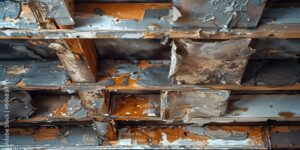
Roof leaks weaken your home’s foundation over time. Rotting wood frames, compromised ceilings, and warped structures can lead to unexpected collapses, endangering your safety. Even minor water damage can deteriorate floors and drywall, creating physical hazards for your family.
Additionally, as roof leaks impact your home’s structural integrity, they expose you to chemicals or asbestos trapped within older building materials, which get released into the air when disturbed.
5.Pests and Infestations
Where there’s water, pests are likely to follow. A roof leak introduces moisture that may attract termites, roaches, and rodents, all of which pose health risks. Rodents, for example, carry harmful diseases like salmonella and hantavirus, while their droppings can further pollute the air.
Termites, meanwhile, can exacerbate wooden structure harm caused by existing water damage, creating even more safety and health threats.
Signs Your Roof May Be Leaking 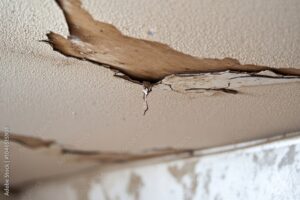
Before these dangers manifest, it’s critical to know how to identify and address roof leaks early. Here are the most common signs to watch for in your home:
- Water Spots on Ceilings or Walls: Brown or yellow stains might indicate water seeping through the roof.
- Visible Mold or Mildew: Check areas with poor ventilation, like attics or basements.
- Dripping or Pooling Water During Rainstorms: This is an obvious yet sometimes ignored sign of leaks.
- Musty Odors: A telltale sign of mold growth, even if not visible.
- Peeling Paint or Warped Walls: These suggest water is trapped beneath the surface.
How to Fix and Prevent Roof Leaks
Now that you know the risks, how can you address and prevent them? While some solutions may require professional help, DIY enthusiasts can take proactive steps to mitigate these dangers.
For Immediate Solutions:
- Locate the Source of the Leak: Use flashlights to inspect your attic or climb onto your roof if safe.
- Contain the Leak: Place a bucket or tarp to catch water temporarily.
- Remove Damaged Items: Discard soaked insulation or furniture to prevent mold from spreading.
For Long-Term Prevention:
- Inspect Your Roof Regularly: Replace missing or damaged shingles before they worsen.
- Seal Vulnerable Areas: Use waterproof sealant around skylights, chimneys, and roof edges.
- Clean Gutters: Clogged gutters trap water that leads to roof damage.
- Ventilate and Dehumidify: Especially in attics, proper ventilation reduces moisture buildup.
When to Call a Professional
Minor repairs and routine maintenance can often handle small leaks. However, when it comes to widespread water damage, structural risks, or unchecked mold growth, professional help is non-negotiable. Professionals often have specialized tools for detecting hidden problems and ensuring no dangerous substances—like black mold—are left behind.
Protect Your Health & Home Today 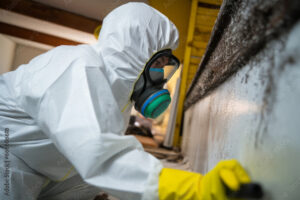
A roof leak is never just about water—it’s about protecting your health, your loved ones, and the home that shelters them. Taking quick action now can save you from costly repairs and long-term health issues.
If you suspect a roof leak or want an inspection, act now before minor drips turn into major problems. Connect with a trusted contractor, ensure regular maintenance, and invest in your family’s safety.
Your home should be a haven—not a health risk!
